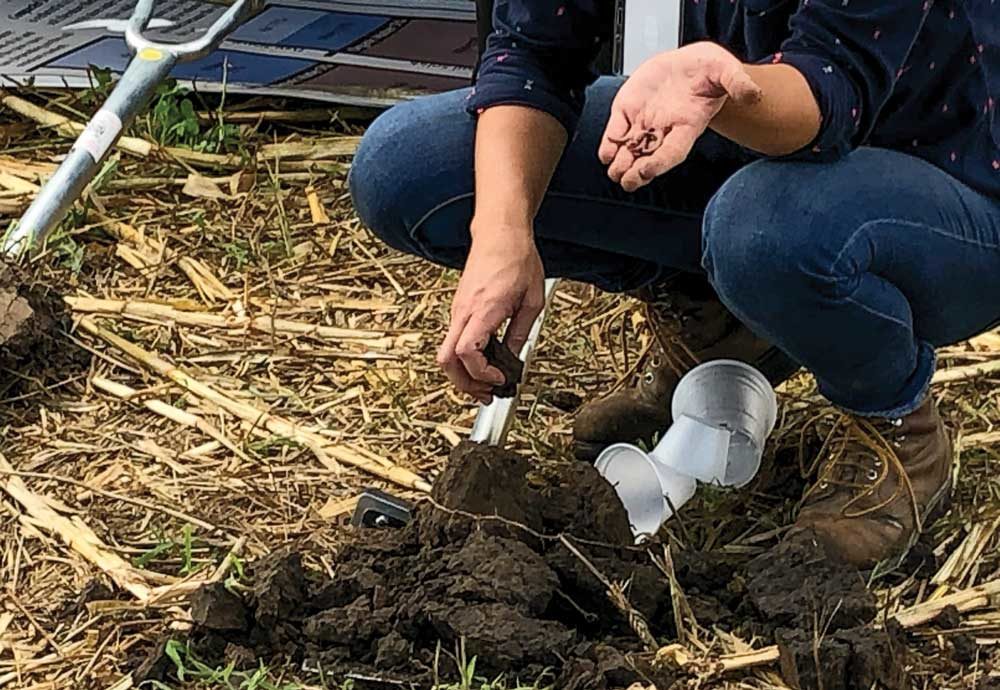No-Till Farmer
Get full access NOW to the most comprehensive, powerful and easy-to-use online resource for no-tillage practices. Just one good idea will pay for your subscription hundreds of times over.

SOIL HEALTH SPECIALISTS are in demand at farms and field days across the country, as their targeted knowledge about the life below ground increasingly offers keen insights about nutrient cycling, water infiltration, biological activity and more. Rainfall simulators, slake tests, and soil pits are their calling cards.
But the soil scientists can’t be everywhere all the time, and there are several low-tech ways farmers can evaluate their own soils, says Stephanie McLain. The Natural Resources Conservation Service (NRCS) soil health specialist in Indiana demonstrated techniques that farmers can use to assess the health of their own soils during a field day held at no-tiller Rick Clark’s Williamsport, Ind., farm.
“As you work on this process of building soil health in your fields, these techniques can build confidence in your cropping system,” McLain says. “They’re not obvious things at a glance, but they are important.”
Before doing anything else, it’s helpful to simply observe the soil. Dig out a chunk of soil and look at the plant roots. “Gently shake the soil off to see if you have a rhizosheath,” she says, referring to the layer of soil particles that will adhere to the root surface. “That’s an indicator of biological activity, that your plant is working to feed its system.”
Examine the way the roots grow. Do they go straight down…